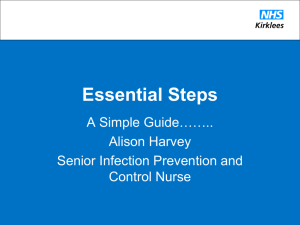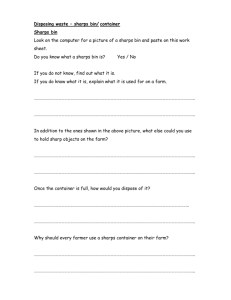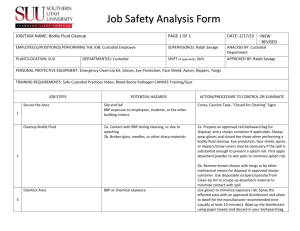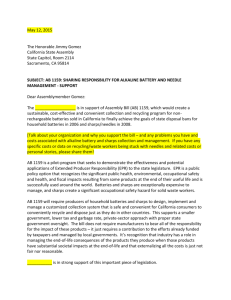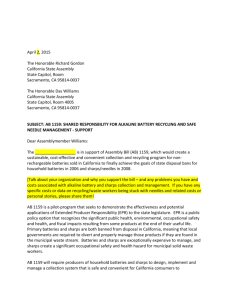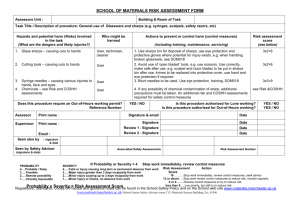17/1/2016
advertisement
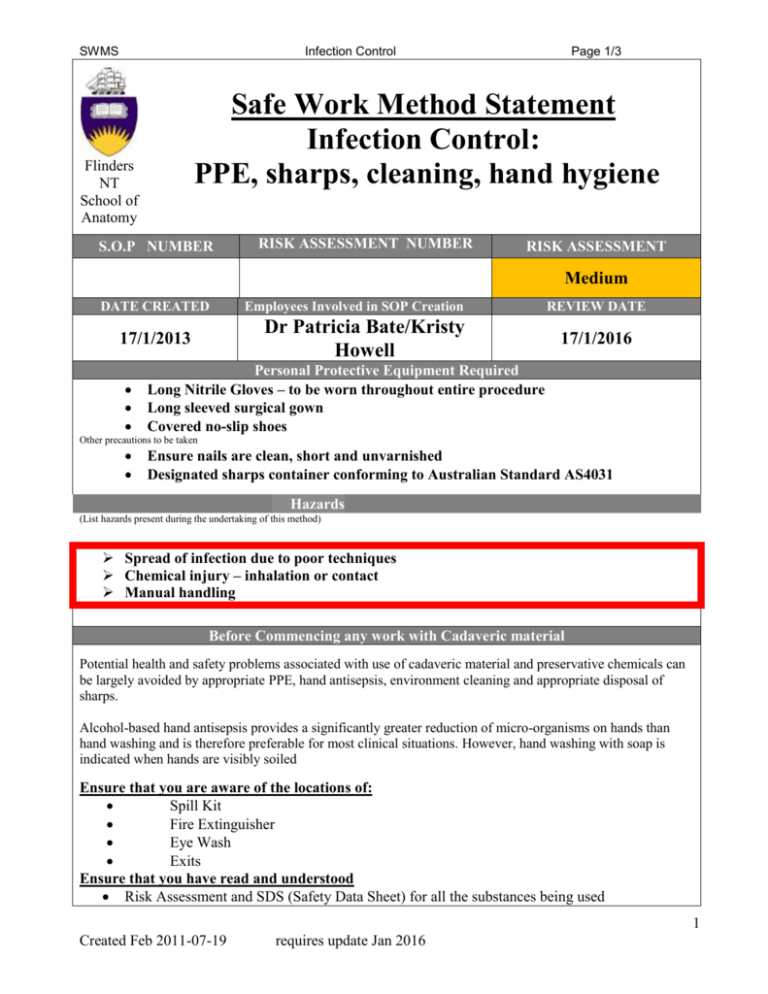
SWMS Infection Control Page 1/3 Safe Work Method Statement Infection Control: PPE, sharps, cleaning, hand hygiene Flinders NT School of Anatomy S.O.P NUMBER RISK ASSESSMENT NUMBER RISK ASSESSMENT Medium DATE CREATED Dr Patricia Bate/Kristy Howell 17/1/2013 Employees Involved in SOP Creation REVIEW DATE 17/1/2016 Personal Protective Equipment Required Long Nitrile Gloves – to be worn throughout entire procedure Long sleeved surgical gown Covered no-slip shoes Other precautions to be taken Ensure nails are clean, short and unvarnished Designated sharps container conforming to Australian Standard AS4031 Hazards (List hazards present during the undertaking of this method) Spread of infection due to poor techniques Chemical injury – inhalation or contact Manual handling Before Commencing any work with Cadaveric material Potential health and safety problems associated with use of cadaveric material and preservative chemicals can be largely avoided by appropriate PPE, hand antisepsis, environment cleaning and appropriate disposal of sharps. Alcohol-based hand antisepsis provides a significantly greater reduction of micro-organisms on hands than hand washing and is therefore preferable for most clinical situations. However, hand washing with soap is indicated when hands are visibly soiled Ensure that you are aware of the locations of: Spill Kit Fire Extinguisher Eye Wash Exits Ensure that you have read and understood Risk Assessment and SDS (Safety Data Sheet) for all the substances being used 1 Created Feb 2011-07-19 requires update Jan 2016 SWMS Infection Control Page 2/3 Equipment Check for safety compliance Ensure that you have read and understood the Risk Assessment and Safe Work Method Statement Obtain training before using any lab equipment Hazardous waste Prepare appropriate labelled containers for tips, vials, waste solutions Procedure All people working with cadaveric material must Wear full PPE Observe correct procedures for hand antisepsis, management of sharps, chemicals and other equipment Observe correct procedures for manual handling, Hand Antisepsis: Alcohol Rub Make sure that the hands are not wet (ie. with water) before commencing alcohol hand antisepsis. Ensure all skin surfaces are accessible. Dispense 2-3 squirts of alcohol rub from the dispenser onto the hands. Rub hands to cover all hand and finger surfaces, including fingertips and the dorsal sides of thumbs. Rub hands together until alcohol has dried by evaporation. Takes 15-30 seconds Hand Antisepsis: Hand washing Use soap or other detergents and water Ensure all skin surfaces are accessible. Rub soap onto the hands all hand and finger surfaces, including fingertips and the dorsal sides of thumbs. Rinse with fresh water Dry with single use towel Sharps: Single use sharps to be used , though all other instruments to be scrubbed & soaked in appropriate disinfectant will not be passed hand to hand but will be disposed of by the user into sharps disposal bin at point of use When full the sharps disposal bin will be placed into clinical waste bin near the generator, outside the Anatomy Lab for collection by waste disposal company. Cleaning – Equipment and Surfaces: Every teaching session involving wet specimens will be quarantined by a subsequent one hour cleaning break Frequently touched surfaces and all horizontal surfaces will be cleaned with detergent and disinfectant immediately after sessions with wet specimens, and weekly. Disinfectant will be used according to manufacturer’s instructions with appropriate PPE and in accordance with SDS. Other surfaces will be cleaned with detergent and disinfectant after spillage, when visibly soiled and weekly. 2 Created Feb 2011-07-19 requires update Jan 2016 SWMS Infection Control Page 3/3 Dissection instruments will be scrubbed with detergent and disinfectant after each use Models and texts will not be handled while wearing gloves Models and texts will not be placed on trolleys that hold wet specimens Any texts that are handled with gloves or laid on a tray with a wet specimen or visibly soiled will remain in the Laboratory stored in a sealed box on a shelf in the cool room. They will only be handled with gloves Any models that are handled with gloves or laid on a tray with a wet specimen or visibly soiled will be cleaned with detergent and disinfectant Food and Drink Will not be permitted in the NT SOA Laboratory. Compliance Compliance with the above procedures is promoted by notices on laboratory walls information in NT SOA Laboratory Manual which is available at all times and regularly updated to conform with current practice information in Inductions verbal reminders from laboratory staff Compliance with the above procedures is monitored by routine and impromptu inspections Sources The above procedures were developed from the OSSIE Infection Tool Kit accessed on Feb 2nd 2011 at www.health.gov.au 3 Created Feb 2011-07-19 requires update Jan 2016


